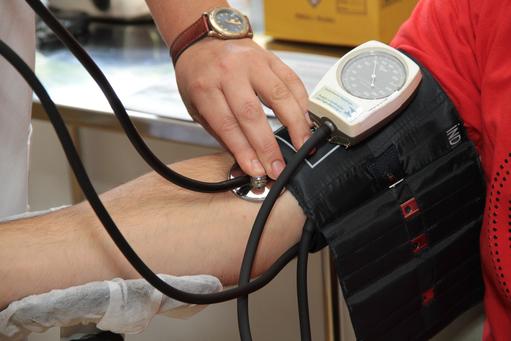- 90% of the 17m heart related deaths each year are preventable
- Not preventing heart disease will cost US$47 trillion over the next 20 years
- UK and US cardiovascular disease (CVD) risk calculators found to be faulty
- Doctors play a leading role in CVD prevention
- Doctors well equipped to diagnose and treat CVD, but ill equipped to prevent it
- Behavioral scientists not doctors should spearhead CVD prevention strategies
Behavioral scientists not doctors will prevent CVD
Should we trust clinicians to devise and implement preventative healthcare strategies?
No!
Behavioral experts with knowhow and experience in techniques that successfully nudge people to initiate and maintain healthy lifestyles, rather than doctors should lead chronic disease prevention strategies. Clinicians are programed to diagnose and treat according to strict guidelines, and preventing disease is not in their DNA.
What is in this commentary?
This Commentary focuses on CVD, but its message applies to any disease prevention strategy. It reviews a number of high profile CVD tools from the UK, USA and India, and found that a CVD risk calculator developed by world-renowned UK cardiologists is over engineered, and its inventors show little appreciation of the significant practical challenges associated with its implementation via UK GPs, who are in crisis. Another CVD risk calculator, which has been used extensively by British GPs since 2009 has been found to have a software glitch, which may have led to thousands of patients being misdiagnosed and wrongly treated. A similar software problem was found in a US CVD risk calculator popular among primary care doctors, which overestimated the risk of a CVD event, and led doctors to unnecessarily prescribe cholesterol-lowering drugs called statins. A more successful CVD prevention calculator has been introduced in India by a former cardiologist and healthcare entrepreneur. The calculator’s success is associated with its simplicity, accessibility, and the fact that it effectively engages and influences people’s behavior. The Commentary describes behavioral techniques, which are necessary to engage at risk people, and nudge them towards permanently adopting healthier lifestyles.
Overall our review suggests that doctors are well equipped to diagnose and treat CVD, but ill-equipped to prevent it.
An English academic approach to preventing CVD
The Joint British Societies Risk Calculator, the JBS3, was launched in 2014 as a tool for the prevention of CVD. It was the result of a collaborative effort of 11 British cardiovascular societies chaired by Professor John Deanfield, the British Heart Foundation Vandervell Professor of Cardiology at the University of London. The calculator embodies the UK’s national guidelines for the prevention of CVD, and is managed by the British Cardiovascular Society, and supported by the British Heart Foundation. Although available as an app, the calculator is designed for use by doctors and practitioners with their patients.
Unlike conventional risk assessment devices, which focus on high-risk patients, the JBS3 emphasises lifetime risk of CVD events, such as a heart attack, ischemic stroke or dying from coronary artery disease. To achieve this, the calculator’s algorithms are predicated upon a large data pool of people who have a relatively low 10-year risk of a CVD event, but who nevertheless have a high lifetime event risk.
The JBS3 allows doctors to assess a person's heart age compared with a person of the same age, gender and ethnicity with optimal risk factors. It also generates estimates of 10-year CVD risk, and average CVD event-free survival. Results are intended to facilitate an informed discussion with patients in which doctors can show, in different graphical formats, how lifestyle modifications and other interventions, such as drug treatment, can increase a patient’s years of healthier life. Such discussions are expected to motivate patients to make lifestyle choices, which help them prevent future CVD events.
A cautionary note
Developing a risk calculator mediated by GPs is no guarantee of producing a significant reduction in the vast burden of CVD. It is too early to assess the effectiveness of the JBS3 Risk Calculator, but it appears to have underestimated the challenge associated with getting overstretched and demoralized UK primary healthcare professionals to use a new tool to engage large numbers of people at risk of CVD.
Previous Commentaries have described the UK’s primary care crisis. Over the past decade GPs’ workloads have increased significantly, as a result of the government’s decreasing investment in primary care, and the increasing prevalence of chronic multi-morbidity lifetime conditions, such as CVD. Trainee GPs are dwindling, newly trained GPs are seeking employment abroad, and increasing numbers of experienced GPs are taking early retirement. “GPs in the UK are so fatigued and overworked that they are at risk of harming patients by misdiagnosis”, says Dr. Maurine Baker, chair of the Royal College of General Practitioners.
A software glitch in a popular British CVD calculator
In May 2016 about 33% of UK doctors were instructed by the government’s Medicines & Healthcare Products Regulatory Agency (MHRA) to warn thousands of patients that their treatment plans, developed from the results of a computer algorithm embedded in a CVD risk calculator could be wrong, and people at risk of a CVD event may have been mistakenly prescribed or denied statins.
The risk calculator, called the QRISK2, was introduced in 2009 by the IT company TPP to calculate the risk of CVD, and currently is used in some 2,500 primary care surgeries throughout the UK to help GPs to determine which patients are at risk of CVD. The calculator is embedded in another TPP product; SystmOne, which is a software system extensively used by GPs to access a single source of information, detailing a patient’s contact with the health service across a lifetime.
A faulty American CVD risk calculator
Recently, a widely recommended American risk calculator for predicting a person's chance of experiencing a CVD event was found to overestimate the actual five-year risk in adults overall, and across all socio-demographic subgroups, leading doctors to unnecessarily prescribe statins. The study, by Kaiser Permanente, was published in the Journal of the American College of Cardiology in May 2016. It suggests that the incidence of heart disease over the period between 2008 and 2013 “was substantially lower than the predicted risk in each category". According to Dr Alan Go, a lead author, "Our study provides critical evidence to support recalibration of the risk equation in 'real world' populations, especially given the individual and public health implications of the widespread application of this risk calculator.”
An Indian entrepreneur’s approach to preventing CVD
Billion Hearts Beating is an open, and easy-to-use website launched in 2010 by Dr. Prathap Reddy, an Indian cardiologist turned entrepreneur who founded the Apollo Group of hospitals, with the mission of bringing world-class affordable healthcare to India. Reddy is mindful that there are some 65m people in India with CVD, but each year only about 100,000 of these receive specialist treatment. Unsurprisingly, about 2.4 million people die each year in India from CVD related events. The Billion Hearts Beating website identifies five simple solutions for lowering the risk of CVD: (i) cessation of smoking, (ii) a healthy diet, (iii) increased physical activity, (iv) a reduction in stress, and (v) regular heart checks.
The Billion Hearts Beating campaign fares better than the British JBS3, not least because it employs a simpler way to engage at risk people directly and encourages them to follow recommended solutions to reduce their overall CVD risk. To date, over 505,000 visitors to the Indian website have used its embedded risk calculator and importantly, pledged to improve their diets and lifestyles in order to reduce their risk of CVD.
CVD a leading silent killer
CVD is often asymptomatic, caused by atherosclerosis, and represents a family of conditions linked by common risk factors, and includes coronary heart disease, stroke, hypertension, hypercholesterolemia, diabetes, chronic kidney disease, peripheral arterial disease and vascular dementia. Many people who have one CVD condition commonly suffer from other related conditions.
According to the World Health Organization (WHO), each year CVD accounts for more than 17.5m deaths worldwide, despite the fact that 90% are preventable. Deaths from CVD are projected to grow to some 24m by 2030. Direct and indirect costs of CVD total more than US$316.6bn. The economic costs of not preventing CVD are estimated to be US$47 trillion over the next 20 years.
CVD is the UK’s single biggest killer. There are seven million people living with CVD in the UK. Annual healthcare costs associated with CVD amount to some US$14bn, while the UK’s annual economic burden of CVD, including indirect costs from premature death and disability, is over US$20bn. About 85.6m Americans are living with CVD, which is responsible for killing over 370,000 Americans a year. By 2030, 40.5% of the US population are projected to have CVD. Between 2010 and 2030, total direct US medical costs of CVD (2008 US$) are projected to triple, from US$273bn to US$818bn. CVD is the leading cause of morbidity and mortality in India, where an estimated 65m people suffer from the condition.
Despite the improvements in outcomes for CVD in the UK and US over the last 20 years, it remains the major cause of morbidity and mortality in population throughout the world. More patients are surviving their first CVD event, and they remain at high risk. Further, levels of certain risk factors such as obesity, and diabetes are increasing. More focus on effective prevention is therefore required.
How “nudge” can prevent CVD
CVD prevention strategies are too important to be left to clinicians. To be successful prevention strategies have to nudge people to change their lifestyles, and this requires experts in behavioral techniques. Over the past decade behavioral scientists have revolutionized the way we encourage people to change entrenched behaviors, which are not in their interest.
It all started in 2008 with the ground-breaking publication on behavioral economics, Nudge: Improving Decisions About Health, Wealth and Happiness, written by US academics Cass Sunstein and Richard Thaler. The authors argue that by simply making small changes to the way options are framed and presented to people - “choice architecture” - provides a cheap and easy way to “nudge” people to change their lifestyles without actually restricting their personal freedoms. Politicians loved the thesis, and ‘Nudge’ became compulsory reading among policy makers. President Obama and Prime Minister Cameron set up “nudge units” in the White House and 10 Downing Street to improve public services and save money by tackling previously intractable policy issues.
Small personal touches make a big difference
One of the first tasks Cameron gave the Downing Street nudge unit was to encourage more unemployed people to turn up for job interviews. The unit found that the standard impersonal written request to attend a job interview only yielded an 11% response rate. Adding the person’s name, for example, “Hi John”, increased the response rate to 15%. But when the request was ended with a personal phrase and signed off such as, “I’ve booked you a place, Good luck, (signed) Margaret”, the response rate jumped to 27%. These small personal touches were so successful that now they are used in every job center in the UK.
Understanding human behavior is key
Under the leadership of David Halpern, the UK’s nudge unit has quadrupled in size since it was spun out of government in February 2014. Now a private company of 60 people jointly owned by its employees, the Cabinet Office, and Nesta, the nudge unit permeates almost every area of government policy, and also is working with Bloomberg Philanthropies on a US$42m project to help solve some of the biggest problems facing US cities. The UK’s Revenue and Customs (HMRC) has set up its own behavioral insights unit, and nudge teams are being established throughout the world in Australia, Singapore, Germany and the US.
Halpern’s unit has, among other things, signed up an extra 100,000 organ donors a year, persuaded 20% more people to consider switching energy provider, and doubled the number of army applicants. Also, it has implemented behavior change strategies that motivate individuals to initiate and maintain healthy behaviors that fit their lifestyle in approachable and convenient ways. The unit’s behavior change strategies that have demonstrated self-efficacy and self management are examples that can be incorporated into lifestyle change programs, which could help people maintain healthy habits even after a program ends, and thereby be a significant element in CVD prevention strategies.
Takeaways
If the UK’s nudge unit has discovered anything, it is that an understanding of human behavior is vital for almost all public policy, and this includes healthcare and CVD prevention strategies. Clinicians leading CVD prevention programs understand the disease, but they do not understand the psychology of the people with the disease. Clinicians are well equipped to diagnose and treat CVD, but ill equipped to prevent it. The sooner David Halpern is tasked with preventing CVD, the sooner the devastating personal and economic burden of CVD in the UK will be reduced.
|












